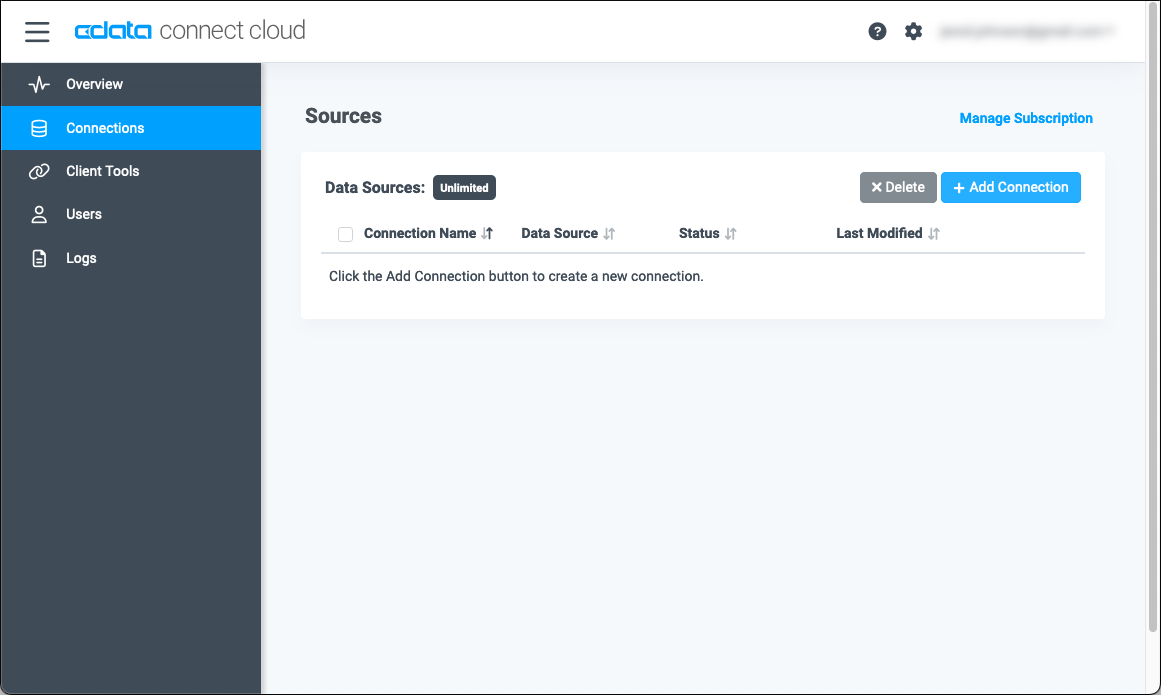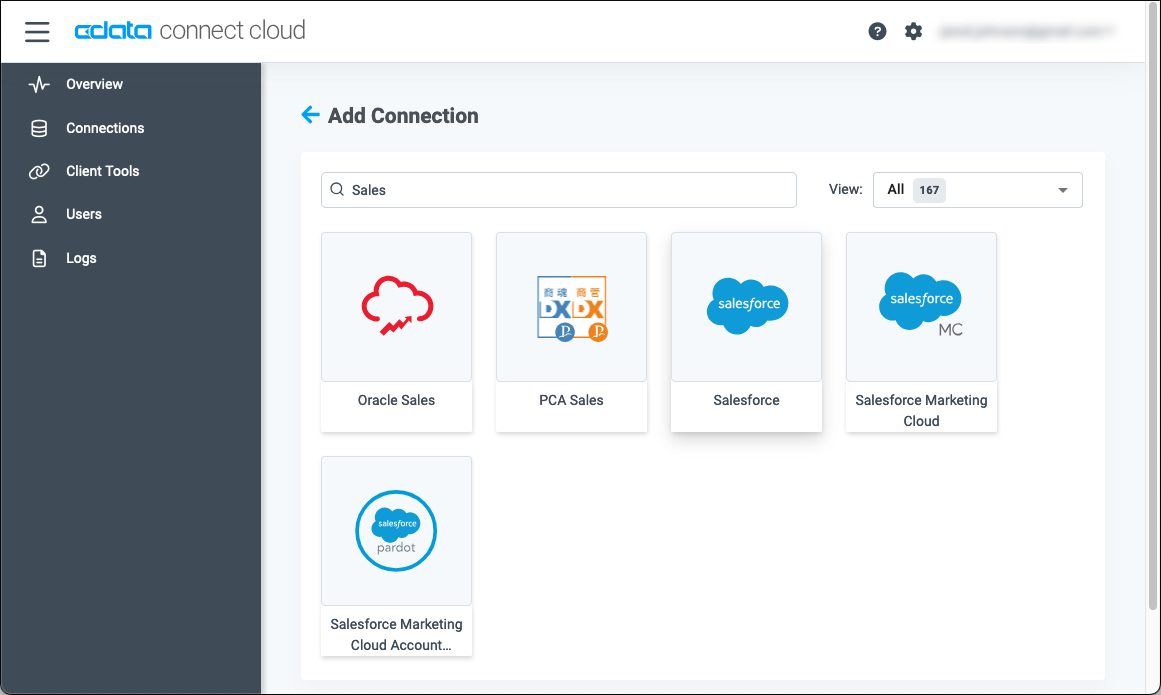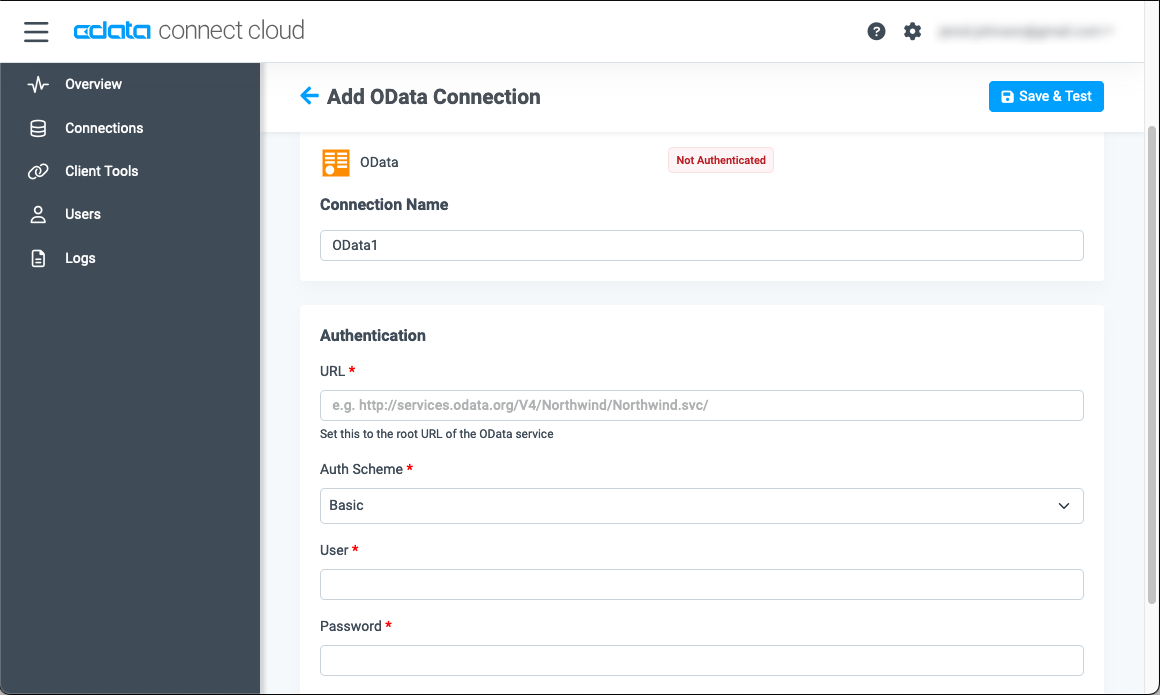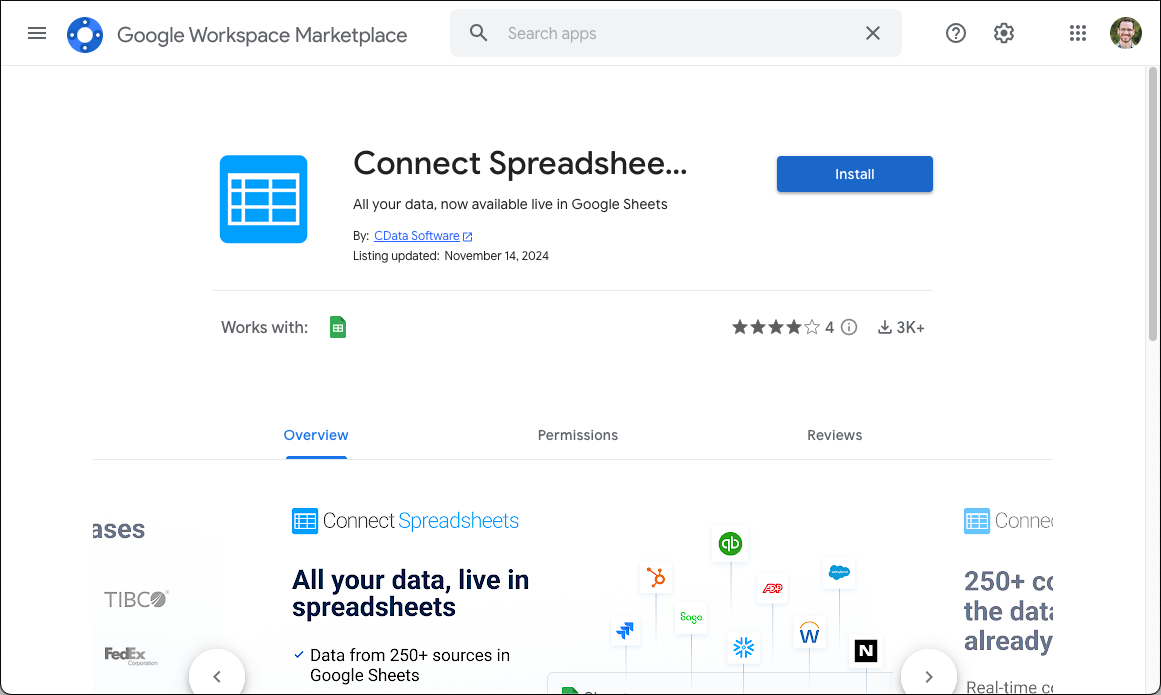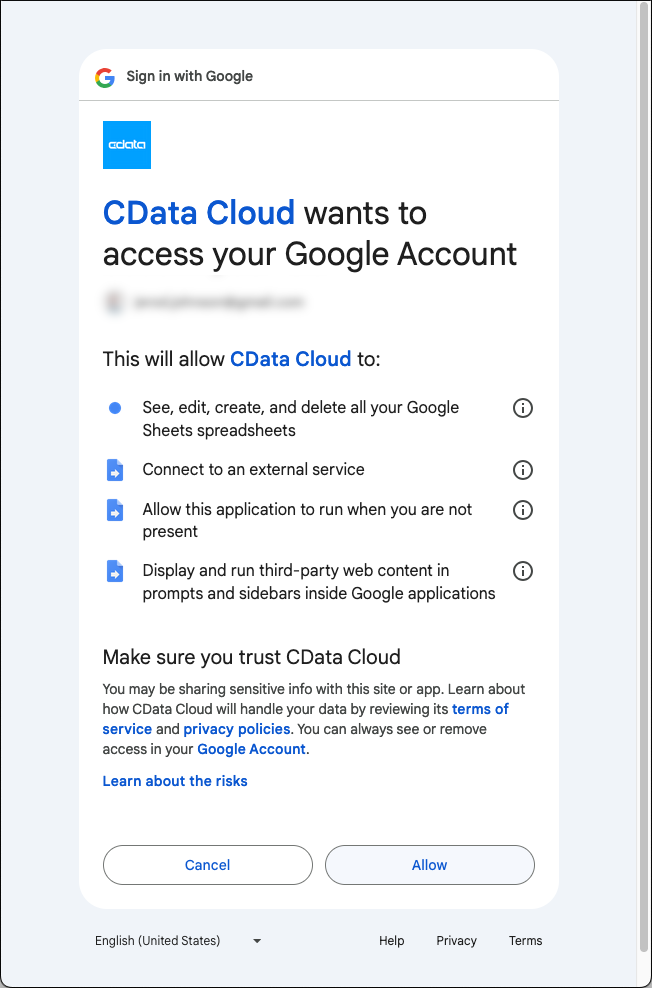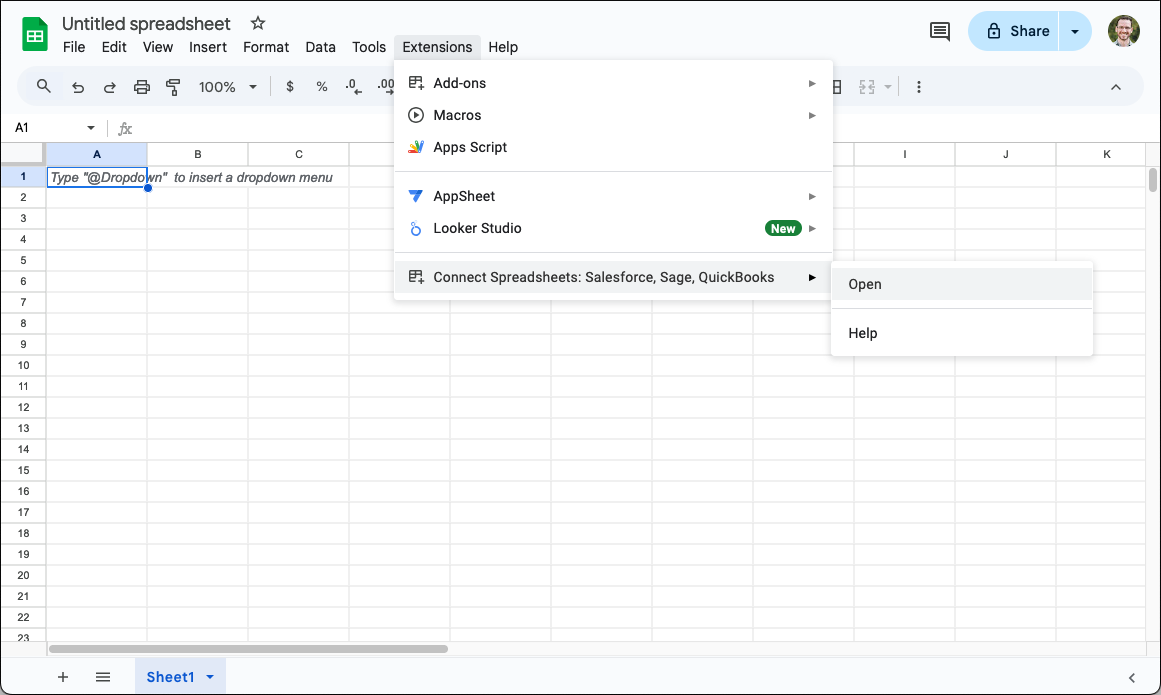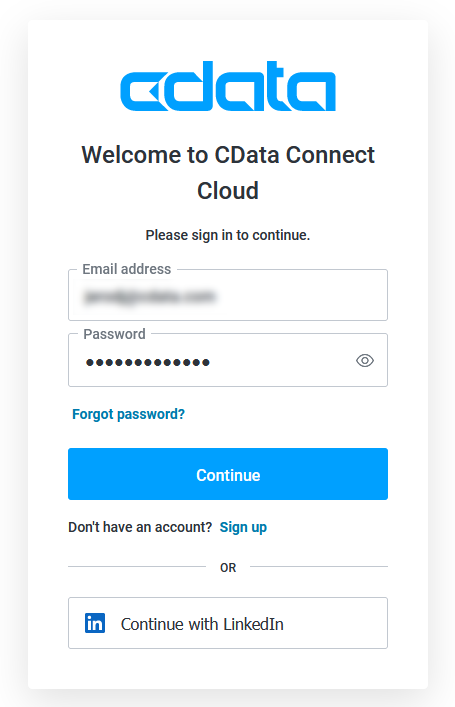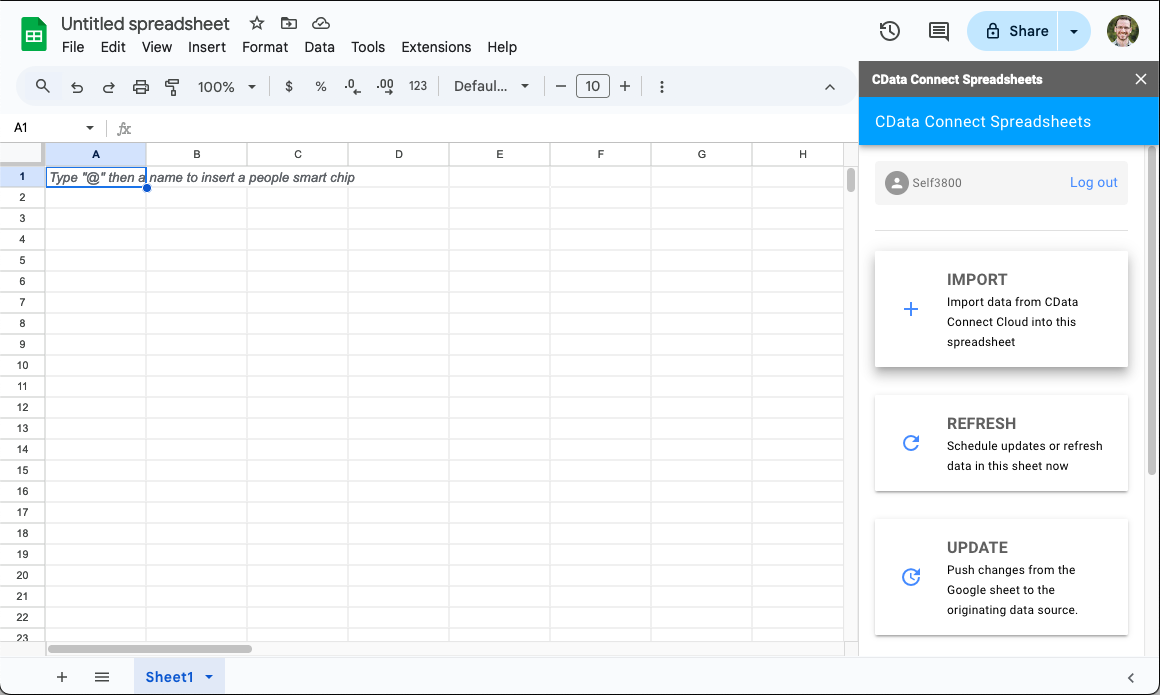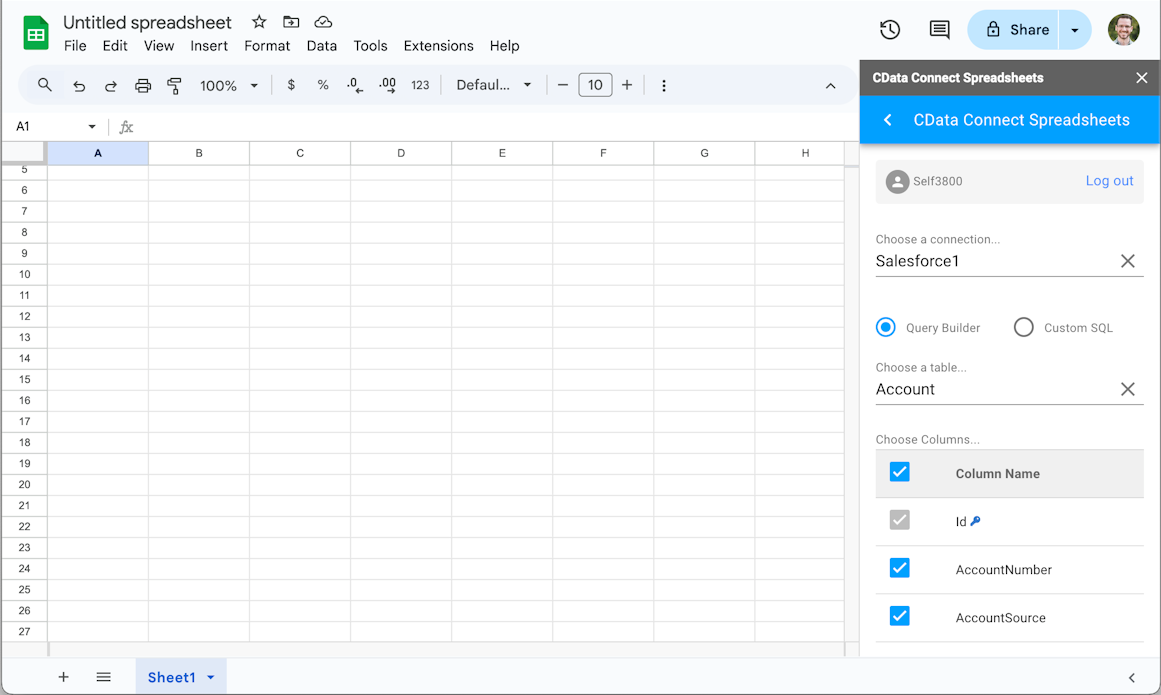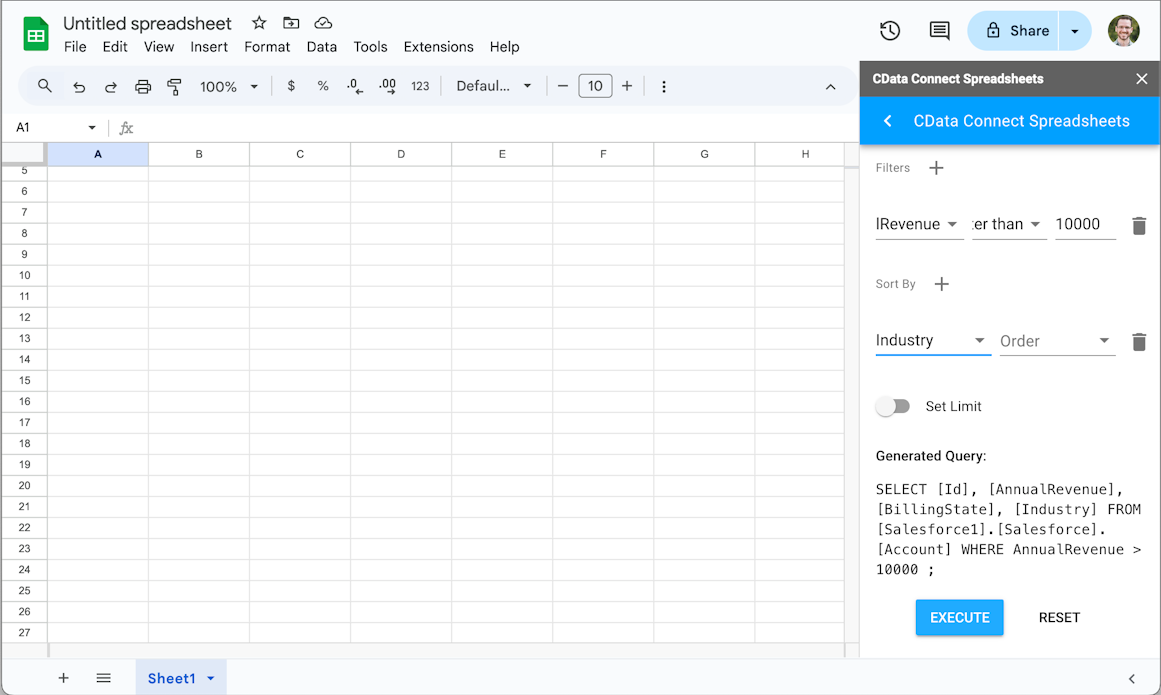Discover how a bimodal integration strategy can address the major data management challenges facing your organization today.
Get the Report →Access Live SingleStore Data in Google Sheets
Use Connect Spreadsheets by CData to gain access to live SingleStore data from your Google Sheets.
Looking for Connect Cloud instructions?
Your Connect Cloud account includes Connect Spreadsheets, so you can use the instructions below. You can expect minor differences when referencing the Connect Spreadsheet platform, but the principles still apply!
Google Sheets is a web-based spreadsheet program provided by Google. When integrated with Connect Spreadsheets by CData, you can effortlessly gain access to SingleStore data directly within Google Sheets for tasks such as data analysis, collaboration, calculations, and more. This article offers a comprehensive guide on connecting to SingleStore within Connect Spreadsheets and accessing live SingleStore data seamlessly within Google Sheets.
Connect Spreadsheets is the easiest way to get all your live data into Microsoft Excel and Google Sheets - no more downloading, wrangling, and uploading files again. Just connect to your data, select the dataset you'd like to see, and import it into your spreadsheet.
This setup requires a Connect Spreadsheets account and the Connect Spreadsheets Add-On for Google Sheets. To get started, sign up a free Connect Spreadsheets account and install the free Connect Spreadsheets Google Sheets Add-On.
Configure SingleStore Connectivity for Google Sheets
Connectivity to SingleStore from Google Sheets is made possible through Connect Spreadsheets. To work with SingleStore data from Google Sheets, we start by creating and configuring a SingleStore connection.
- Log into Connect Spreadsheets, click Connections and click Add Connection
![Adding a Connection]()
- Select "SingleStore" from the Add Connection panel
![Selecting a data source]()
-
Enter the necessary authentication properties to connect to SingleStore.
The following connection properties are required in order to connect to data.
- Server: The host name or IP of the server hosting the SingleStore database.
- Port: The port of the server hosting the SingleStore database.
- Database (Optional): The default database to connect to when connecting to the SingleStore Server. If this is not set, tables from all databases will be returned.
Connect Using Standard Authentication
To authenticate using standard authentication, set the following:
- User: The user which will be used to authenticate with the SingleStore server.
- Password: The password which will be used to authenticate with the SingleStore server.
Connect Using Integrated Security
As an alternative to providing the standard username and password, you can set IntegratedSecurity to True to authenticate trusted users to the server via Windows Authentication.
Connect Using SSL Authentication
You can leverage SSL authentication to connect to SingleStore data via a secure session. Configure the following connection properties to connect to data:
- SSLClientCert: Set this to the name of the certificate store for the client certificate. Used in the case of 2-way SSL, where truststore and keystore are kept on both the client and server machines.
- SSLClientCertPassword: If a client certificate store is password-protected, set this value to the store's password.
- SSLClientCertSubject: The subject of the TLS/SSL client certificate. Used to locate the certificate in the store.
- SSLClientCertType: The certificate type of the client store.
- SSLServerCert: The certificate to be accepted from the server.
Connect Using SSH Authentication
Using SSH, you can securely login to a remote machine. To access SingleStore data via SSH, configure the following connection properties:
- SSHClientCert: Set this to the name of the certificate store for the client certificate.
- SSHClientCertPassword: If a client certificate store is password-protected, set this value to the store's password.
- SSHClientCertSubject: The subject of the TLS/SSL client certificate. Used to locate the certificate in the store.
- SSHClientCertType: The certificate type of the client store.
- SSHPassword: The password that you use to authenticate with the SSH server.
- SSHPort: The port used for SSH operations.
- SSHServer: The SSH authentication server you are trying to authenticate against.
- SSHServerFingerPrint: The SSH Server fingerprint used for verification of the host you are connecting to.
- SSHUser: Set this to the username that you use to authenticate with the SSH server.
![Configuring a connection (OData is shown)]()
- Click Create & Test
With the connection configured, you are ready to connect to SingleStore data from Google Sheets.
Access Live SingleStore Data from Google Sheets
The steps below outline connecting to Connect Spreadsheets from Google Sheets to access live SingleStore data.
- Log into Google Sheets, create a new sheet (or open an existing one).
- Click Add-ons and click Get Add-ons (if you have already installed the Add-on, jump to step 5).
- Search for Connect Spreadsheets Add-On and install the Add-on.
![Install the Add-On]()
- Authorize the Add-On.
![Authorize the Add-On]()
- Back in Google Sheets, click Add-ons and open the Connect Spreadsheets Add-On.
![Opening the Add-On]()
- In the Add-On panel, click "Log in" to sign into and authenticate with your Connect Spreadsheets account
![Authenticating with Connect Spreadsheets]()
- In the Connect Spreadsheets panel in Google Sheets, click Import
![Connect Spreadsheets panel in Google Sheets]()
- Choose a Connection (e.g. SingleStore1), Table (e.g. Orders, and Columns to import
![Cheesing a Connection, Table, and Columns]()
- Optionally add Filters, Sorting, and a Limit
![Filters, Sorting, Limits]()
- Click Execute to import the data and opt to overwrite the existing sheet or create a new one.
![Opting where to import the data]()
Live Access to SingleStore Data from Cloud Applications
New, you have a direct, cloud-to-cloud connection to live SingleStore data from your Google Sheets workbook. You can add more data to your workbook for calculations, aggregations, collaboration, and more.
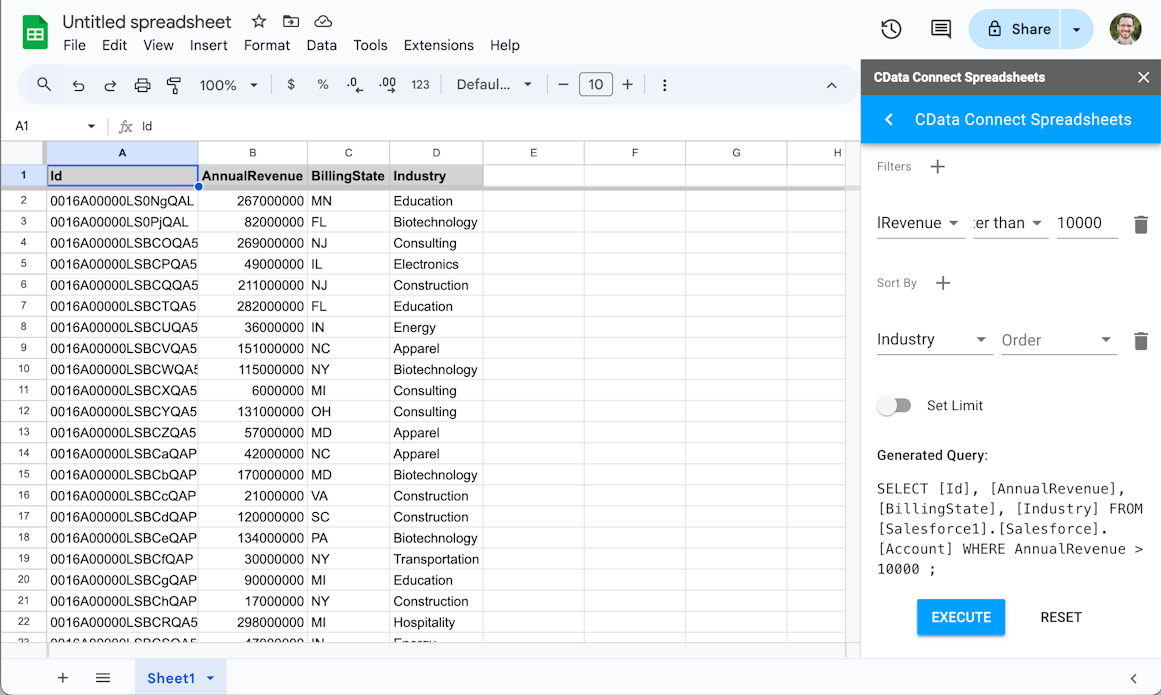
Try Connect Spreadsheets and get real-time data access to 100+ SaaS, Big Data, and NoSQL sources directly from your cloud applications.





